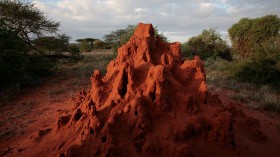Experts said that the number of monkeypox cases has doubled among the unvaccinated and unvaccinated in the United States.
Monkeypox Cases Doubled In US
Data from the Centers for Disease Control and Prevention (CDC) indicated that more than 570 monkeypox cases had been recorded in the US as of March this year. This figure was an increase from the 298 cases reported in 2023.
The latest data have shown that monkeypox is still circulating, with experts saying that there is still a need for people who are at risk of infection to get vaccinated for their own protection.
Most of the cases that the US is currently seeing are either those who are unvaccinated or under-vaccinated, meaning they either never received a vaccine or they only got one dose of it, according to Dr. Jenni McQuiston, deputy director of the CDC's High-Consequence Pathogens and Pathology division.
The CDC noted that since May 2022, the US has seen more than 30,000 cases of monkeypox, most of which occurred in that year. Meanwhile, by the start of 2023, infection rates had slowed down with the country having been recorded 298 cases between January 1 and March 23, 2023.
Read Also: Monkeypox Cases Detected in Animals Might be Impossible to Control, Scientists Warn
Viral Illness And Its Symptoms
The World Health Organization (WHO) said that monkeypox is a viral illness caused by the monkeypox virus, a species of the genus Orthopoxvirus. According to WHO, two different clades exist: clade I and clade II.
The common symptoms of monkeypox are a skin rash or mucosal lesions which can last for two to four weeks accompanied by fever, headache, muscle aches, back pain, low energy, and swollen lymph nodes.
Experts said that monkeypox could be transmitted to humans through physical contact with someone who is infectious, with contaminated materials, or with infected animals.
Meanwhile, laboratory confirmation of monkeypox is done by testing skin lesion material by PCR while the disease is treated with supportive care.
To recall, the monkeypox virus was discovered in Denmark in 1958 among monkeys kept for research and the first reported human case of monkeypox was a nine-month-old boy in the Democratic Republic of the Congo (DRC, 1970).
The illness can spread from person to person or occasionally from animals to people. Following eradication of smallpox in 1980 and the end of smallpox vaccination worldwide, monkeypox steadily emerged in central, east and west Africa.
Vaccines and therapeutics developed for smallpox and approved for use in some countries can be used for monkeypox in some circumstances.
From 2022 to 2023, a global outbreak of monkeypox was caused by a strain known as clade IIb. This can be prevented by avoiding physical contact with someone who has the illness.
Moreover, vaccination can help prevent infection for people at risk. Experts said that JYNNEOS is a 2-dose vaccine developed to protect against mponkeypox and smallpox infections.
People need to get both doses of the vaccine for the best protection against the disease. They said that the second dose should be given four weeks after the first dose.
Related Article: WHO Declares Current Monkeypox as a Public Health Emergency of International Concern
© 2024 NatureWorldNews.com All rights reserved. Do not reproduce without permission.






